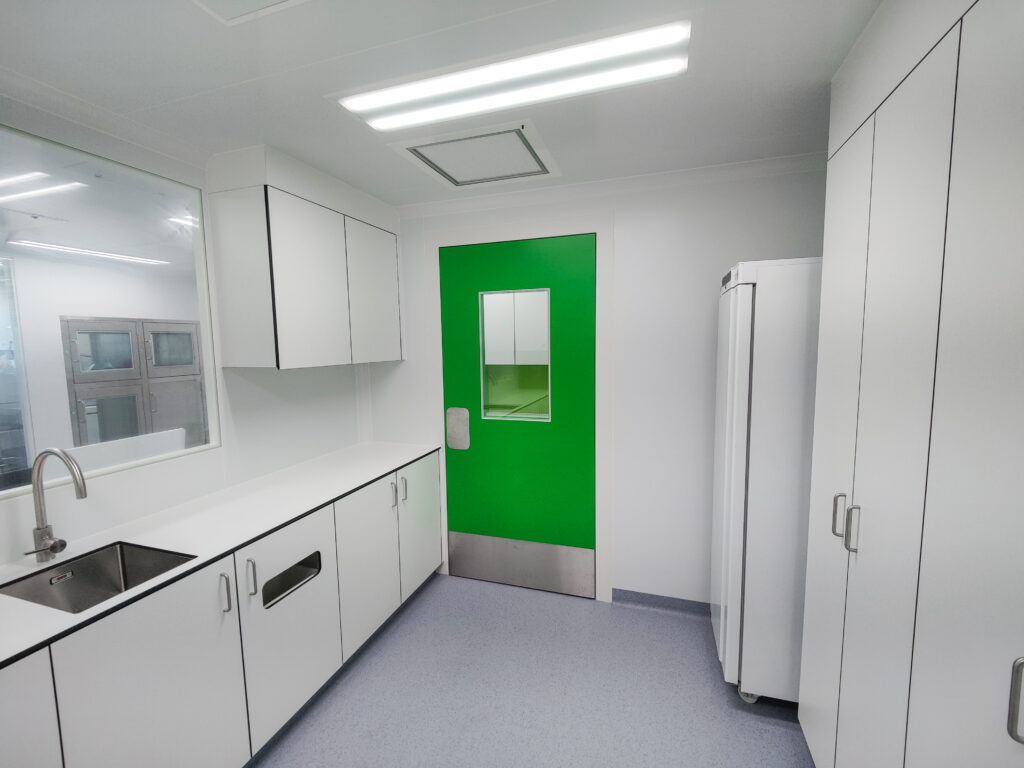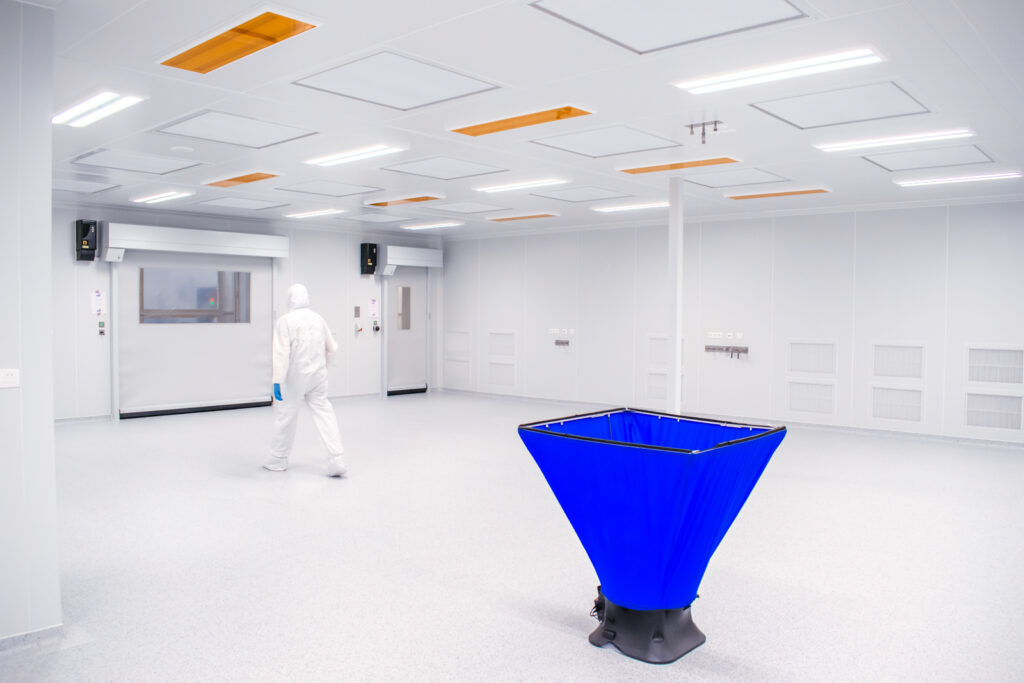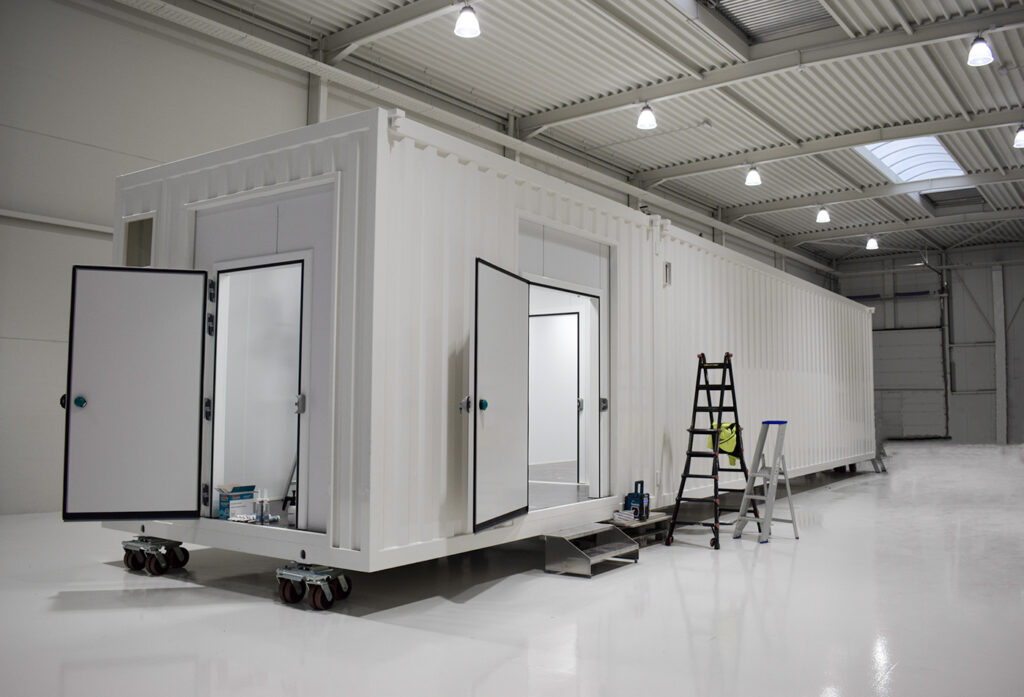The need for contaminant-free spaces within the healthcare industry makes pre-engineered cleanroom design a suitable solution for many hospitals and private clinics. Our pre-engineered cleanrooms have been built many times in healthcare facilities to create isolated and controlled environments. The primary purpose of our pre-engineered cleanrooms in healthcare facilities is to create an environment with low levels of airborne contaminants, including bacteria, viruses and other pathogens.



Cleanrooms can be tailored to the needs and requirements of each clinic, allowing them to offer a higher standard of care and improve patient outcomes. Additionally, while not all private clinics may need a full-fledged cleanroom, incorporating cleanroom principles and best practices can still bring significant benefits to patient care and overall clinic operations.
Cleanroom classifications in healthcare are of paramount importance as they establish a standardized framework for maintaining controlled environments in medical facilities, pharmaceutical manufacturing, and research settings. These cGMP classifications help ensure that specific cleanliness and contamination control standards are upheld, contributing to patient safety, product quality, and regulatory compliance.
Contamination Prevention
Cleanroom equipment, including specialized tools and instruments, is designed to minimize the generation and spread of contaminants. Gowning procedures and the use of equipment like laminar flow hoods help prevent the introduction of airborne particles, microbes, and other contaminants into sensitive areas.
Infection Control
In healthcare settings, preventing the spread of infections is of utmost importance. Cleanroom equipment and gowning protocols help reduce the risk of pathogens being transmitted from healthcare workers or patients to sterile environments, minimizing the potential for hospital-acquired infections.
Regulatory agencies, such as the U.S. Food and Drug Administration (FDA), require healthcare facilities and pharmaceutical manufacturers to adhere to specific cleanliness standards. Cleanroom classifications provide a common language and framework for complying with these regulations, thus avoiding penalties and ensuring patient safety.
Continuous monitoring of environmental conditions, such as temperature, humidity, particle counts, and pressure differentials, is essential. GMPConnect, our data logging and reporting systems ensures 100% traceability and compliance.
The need for contaminant-free spaces within the healthcare industry makes pre-engineered cleanroom design a suitable solution for many hospitals and private clinics. Our pre-engineered cleanrooms have been built many times in healthcare facilities to create isolated and controlled environments. The primary purpose of our pre-engineered cleanrooms in healthcare facilities is to create an environment with low levels of airborne contaminants, including bacteria, viruses and other pathogens.



Cleanrooms can be tailored to the needs and requirements of each clinic, allowing them to offer a higher standard of care and improve patient outcomes. Additionally, while not all private clinics may need a full-fledged cleanroom, incorporating cleanroom principles and best practices can still bring significant benefits to patient care and overall clinic operations.
Cleanroom classifications in healthcare are of paramount importance as they establish a standardized framework for maintaining controlled environments in medical facilities, pharmaceutical manufacturing, and research settings. These cGMP classifications help ensure that specific cleanliness and contamination control standards are upheld, contributing to patient safety, product quality, and regulatory compliance.
Contamination Prevention
Cleanroom equipment, including specialized tools and instruments, is designed to minimize the generation and spread of contaminants. Gowning procedures and the use of equipment like laminar flow hoods help prevent the introduction of airborne particles, microbes, and other contaminants into sensitive areas.
Infection Control
In healthcare settings, preventing the spread of infections is of utmost importance. Cleanroom equipment and gowning protocols help reduce the risk of pathogens being transmitted from healthcare workers or patients to sterile environments, minimizing the potential for hospital-acquired infections.
Regulatory agencies, such as the U.S. Food and Drug Administration (FDA), require healthcare facilities and pharmaceutical manufacturers to adhere to specific cleanliness standards. Cleanroom classifications provide a common language and framework for complying with these regulations, thus avoiding penalties and ensuring patient safety.
Continuous monitoring of environmental conditions, such as temperature, humidity, particle counts, and pressure differentials, is essential. GMPConnect, our data logging and reporting systems ensures 100% traceability and compliance.
Legolisation means standardisation. Standardisation causes a shift in production. Work is carried out in conditioned spaces such as factory halls. our cleanrooms are manufactured partly or entirely off-site, which means huge savings on transport costs and reduction of inconvenience on-site